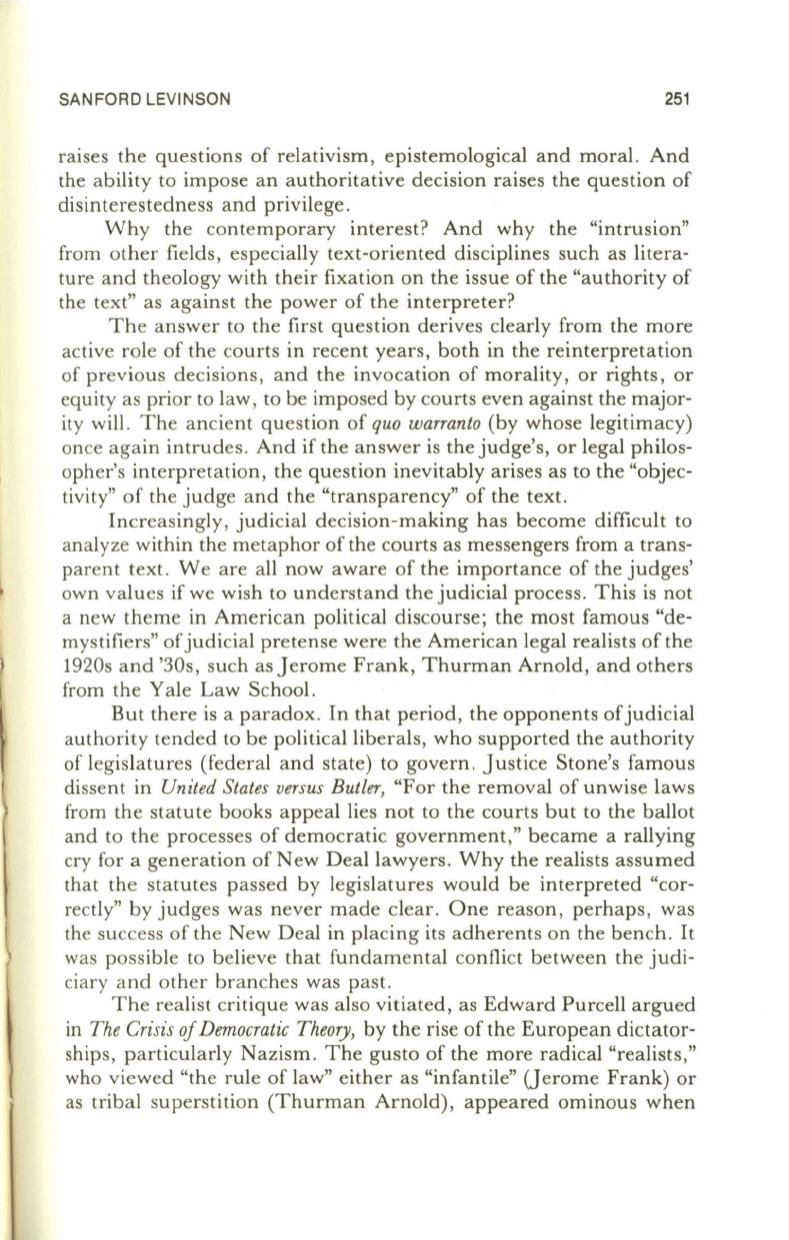
SANFORD LEVINSON
251
raises the questions of relativism, epistemological and moral. And
the ability to impose an authoritative decision raises the question of
disinterestedness and privilege.
Why the contemporary interest? And why the "intrusion"
from other fields, especially text-oriented disciplines such as litera–
ture and theology with their fixation on the issue of the "authority of
the text" as against the power of the interpreter?
The answer to the first question derives clearly from the more
active role of the courts in recent years, both in the reinterpretation
of previous decisions, and the invocation of morality, or rights, or
equity as prior to law, to be imposed by courts even against the major–
ity will. The ancient question of
quo warranto
(by whose legitimacy)
once again intrudes. And if the answer is the judge's, or legal philos–
opher's interpretation, the question inevitably arises as to the "objec–
tivity" of the judge and the "transparency" of the text.
Increasingly, judicial decision-making has become difficult to
analyze within the metaphor of the courts as messengers from a trans–
parent text. We are all now aware of the importance of the judges'
own values if we wish to understand the judicial process. This is not
a new theme in American political discourse; the most famous "de–
mystifiers" of judicial pretense were the American legal realists of the
1920s and '30s, such as Jerome Frank, Thurman Arnold, and others
from the Yale Law School.
But there is a paradox. In that period, the opponents ofjudicial
authority tended to be political liberals, who supported the authority
of legislatures (federal and state) to govern . Justice Stone's famous
dissent in
United States versus Butler,
"For the removal of unwise laws
from the statute books appeal lies not to the courts but to the ballot
and to the processes of democratic government," became a rallying
cry for a generation of New Deal lawyers. Why the realists assumed
that the statutes passed by legislatures would be interpreted "cor–
rectly" by judges was never made clear. One reason, perhaps, was
the success of the New Deal in placing its adherents on the bench. It
was possible to believe that fundamental conflict between the judi–
ciary a nd other branches was past.
The realist critique was also vitiated, as Edward Purcell argued
in
The Crisis ojDemocratic Theory,
by the rise of the European dictator–
ships, particularly Nazism. The gusto of the more radical "realists,"
who viewed "the rule of law" either as "infantile" Uerome Frank) or
as tribal superstition (Thurman Arnold), appeared ominous when


